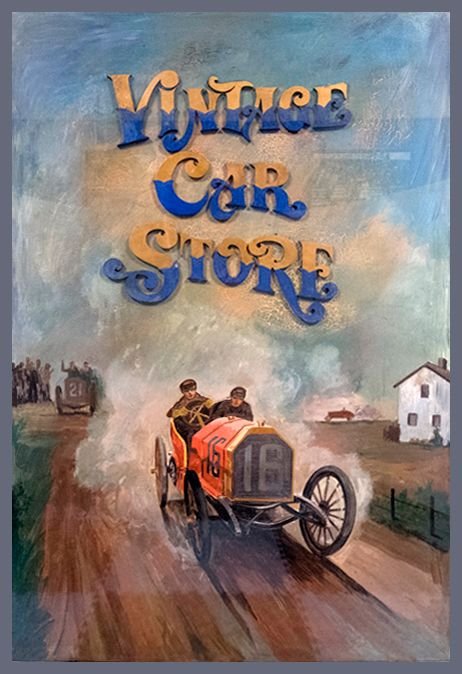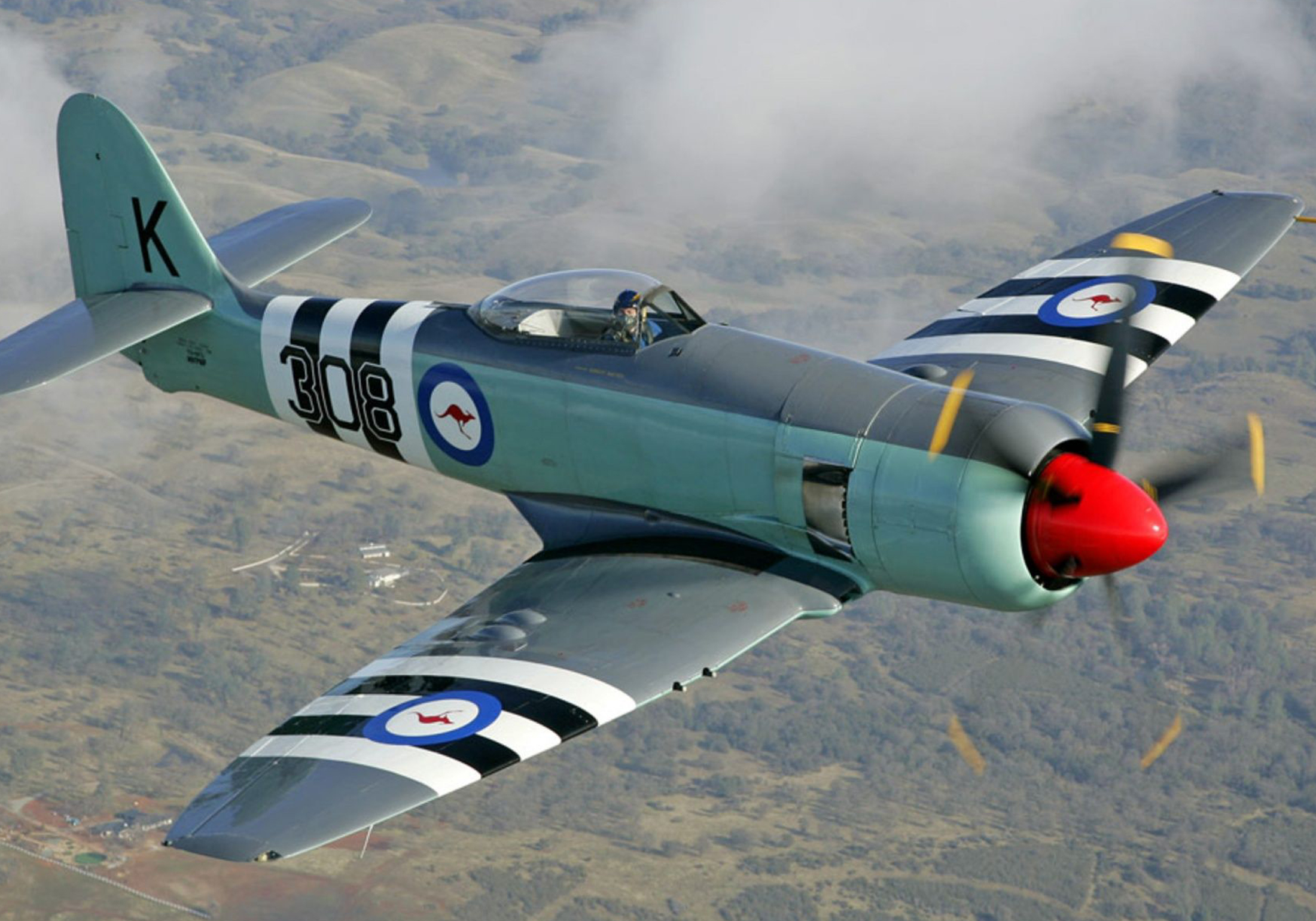 Entering Ed Jurist’s Vintage Car Store in Nyack, New York offered a visual wonderment of not only vintage automotive but, as well, vintage aircraft art and artifacts. A 12-cylinder Merlin engine, the type famous for powering the P-51 Mustang, sat proudly cradled where it could be viewed through the building’s large front window that faced the street.
Entering Ed Jurist’s Vintage Car Store in Nyack, New York offered a visual wonderment of not only vintage automotive but, as well, vintage aircraft art and artifacts. A 12-cylinder Merlin engine, the type famous for powering the P-51 Mustang, sat proudly cradled where it could be viewed through the building’s large front window that faced the street.
On this day in 1982, I had originally strolled in to interview Jurist about a Sherman tank he had sold to a Hollywood rental business years before. As the interview wound down to allow Jurist to depart for dinner, the topic of vintage aircraft surfaced. Suddenly dinner could wait as an animated Jurist held forth on his experiences purchasing vintage war planes from around the world. While the tank story was written and published, the telling of Jurist’s vintage war plane exploits never made it to print, until now.
Buckle your lap belts and hang on for the story of the sputtering Mosquito and the Virgin Loretto.
The sputtering Mosquito and the Virgin Loretto

DeHaviland Mosquito

Though pilot and copilot alike had faced death before while flying bombers in WWII, concern tinged their voices as their eyes flicked across the dead black skies above the jagged, unforgiving and equally black Pyrenees mountains somewhere below. As to how far below, they could only venture a sweaty guess. Spotting a light, any light filled the content of their unspoken prayers as an engine of the vintage WWII DeHaviland Mosquito twin engine bomber sputtered and coughed in what portended to be a death rattle if the plane could not find a place to land and land soon.
Jurist was never a stranger to aircraft adventure starting with his exploits as a wartime B-17 bomber pilot with the Eighth Air Force. Shot down over Nazi Germany, Jurist actually escaped from the Nazi prisoner of war camp where he had been held. In later years Jurist set up business in an old Cadillac dealership built in 1927 that was home to his Vintage Car Store. There, in addition to travelling the world in search of rare and valuable automobiles, he dedicated himself to finding and preserving vintage aircraft, primarily of the military variety. Jurist during his years of searching out vintage war planes brought in more vintage military aircraft to the United States than any other single private individual in America.

Hawker Sea Fury
In 1979 when Iraq was upgrading its air force to jets, Jurist arranged a deal with the Iraqis to purchase 24 of the propeller-driven Hawker Sea Fury fighters being retired. Jurist virtually lived in Baghdad to shepherd the deal. He oversaw the negotiations, watched the planes loaded onto a freighter and, once arriving in America, unloaded at Cape Canaveral.
It was in 1971 that Jurist located a WWII Mosquito fighter bomber. Purchased from its owner in England, the Mosquito, which had appeared in British films, had been maintained in flight worthy condition.
Known as the “Wooden Wonder,” the Mosquito began life as the subject of ridicule primarily because many viewed its wood construction as unworkable. Predominantly made of plywood, Its fuselage consisted of a frameless shell of balsa wood pressed between sheets of birch. However, the shortage of the light metal alloys required in airplane construction made the Mosquito’s reliance on wood a major advantage leading to its acceptance by the RAF. That decision proved to be a very good one for the RAF. By the end of war, the Mosquito’s speed, rate of climb, versatility and durability had made it one of the most respected and admired war planes of WWII. As a testament to its durability, elusiveness and ruggedness, the Mosquito experienced the lowest loss rate of any aircraft in the RAF Bomber Command Aircraft.
 Powered by two Rolls-Royce Merlin engines, the Mosquito had a maximum speed of 415 MPH that made it the fastest aircraft on either side during much of the war. It had a range of 1,500 miles with the ability to carry a bomb load of 4,000 lbs. That bomb load equaled the capability of the four-engine B-17 flying fortress. With a crew of two consisting of a pilot and navigator/bombardier, the Mosquito filled a broad range of roles including bomber, fighter and special operations specialist. One wonderful Special Ops example highlighted the Mosquito’s ability to execute high speed, pin-point, low level attacks. It took place on the morning of January 31, 1943 at a parade in Berlin billed to feature an address by Hermann Goering. As head of the Luftwaffe, Goering had boasted that no enemy aircraft could fly unscathed over Berlin. As Goering prepared to present to the assembled crowd, a squadron of Mosquitoes appeared out of nowhere and effectively put an end to the morning’s festivities. Later that afternoon a second squadron of Mosquitoes put an exclamation point on the RAF’s refutation of Goering’s claim of enemy free skies when a second parade intended to feature a Goering address received the same treatment as the morning festivities.
Powered by two Rolls-Royce Merlin engines, the Mosquito had a maximum speed of 415 MPH that made it the fastest aircraft on either side during much of the war. It had a range of 1,500 miles with the ability to carry a bomb load of 4,000 lbs. That bomb load equaled the capability of the four-engine B-17 flying fortress. With a crew of two consisting of a pilot and navigator/bombardier, the Mosquito filled a broad range of roles including bomber, fighter and special operations specialist. One wonderful Special Ops example highlighted the Mosquito’s ability to execute high speed, pin-point, low level attacks. It took place on the morning of January 31, 1943 at a parade in Berlin billed to feature an address by Hermann Goering. As head of the Luftwaffe, Goering had boasted that no enemy aircraft could fly unscathed over Berlin. As Goering prepared to present to the assembled crowd, a squadron of Mosquitoes appeared out of nowhere and effectively put an end to the morning’s festivities. Later that afternoon a second squadron of Mosquitoes put an exclamation point on the RAF’s refutation of Goering’s claim of enemy free skies when a second parade intended to feature a Goering address received the same treatment as the morning festivities.
Squinting into the darkness blanketing the Spanish mountains below, the glorious history of the Mosquito ranked very low on the crew’s thoughts. One of the high performance 12-cylinder Merlin engines spewed bad noises that reflected declining performance. Though brave and stalwart men, the point of furrowed brows and sweaty palms had been reached. Almost like a cross between a curse and a prayer, Jurist recalled barking out in frustration, “There has got to be a God damned town somewhere down there.” At this point their greatest hope resided in finding a space big enough so they could crash land with some possibility of surviving.
With both hope and eyesight strained to the limit, Jurist spotted a faint blur with the luminance of a distant star. No doubt existed in either crew member, their fate would hang on the ability of that distant blur to be their salvation. The faltering engine would not tolerate a plan B.

As the Mosquito limped on above the unseen but none the less foreboding mountain peaks below, the dim blur began to acquire definition. Initially unsure of what they saw, it became shockingly evident that the character of the dull blur now taking shape came from two rows of torches that framed the full length of, unbelievably, a runway.
Jurist set the faltering Mosquito down squarely on a remote mountain airstrip at the center of a joyous celebration. As the crew left the ailing Mosquito and surveyed the robust life and jubilation that surrounded them, their abilities to comprehend were sorely challenged, and then the priest appeared.
The priest welcomed the unexpected visitors to the festival where the Aeroclub of the village of Vigo, Spain was celebrating the Feast of the Virgin Loretto – The patron saint of pilots.
As joyous celebrants encircled the Mosquito crew someone placed a Virgin Loretto metal around Jurist’s neck. For the rest of his life Jurist never took off that metal.

Great story Burton! One of the reasons I stick to vintage cars instead of expanding my horizons into vintage aircraft, is that you really can’t pull over to the side of the sky if you are having a technical problem! I think of that fairly often as I sit by the side of the road waiting for the AAA truck to show up…
There is a certain unquestionable truth to your position.
Bert,
Another surprising story, very entertaining! As a pilot, I cannot begin to describe the elation one feels when you realize you’re going to be delivered from a terrible situation, and there is hardly a scarier one than being over mountainous terrain at night in weather and have your ship acting up.
Another interesting chapter of the “Mossies” history was Operation Jericho, in Feb of 1944 a squadron of mosquitoes attacked the German prison in Amiens, France, with a precision attack to spring several Important French resistance prisoners. Look it up, it’s a daring feat. These pilots were flying so low that their props were cutting grass!
I wish I had known Mr. Jurist. I could have spent many enjoyable hours talking flying with such a well seasoned aviator…….
Coming from a man with your flight credentials I am truly pleased. And thanks for the added story. Never heard that one.
On 2021-08-05 08:57, michael rosenthal wrote:
I loved this post. My wife, a critical care doctor, meditates every
morning. She’s a follower of John Kabot Zin (full catastrophe
living), and is a strong believer in “mind over matter”, which may be
a huge oversimplification of what you’ve conveyed in this posting.
Whatever helps, helps!
I’m so pleased that you’ve found this option.
AND, the answer to this weeks’ quiz is CADILLAC!
Michael
I was pleased to read this story about the Mosquito. It reminded me of a movie I saw as a child. I think it was “Mosquito Squadron” or something like that. I was so impressed by the aircraft, that I built a model of the plane.
I was not aware of its payload prowess, so thanks for sharing the story.
Thank you for spending a little time with Drivin’ News. Mosquito was indeed a great plane.